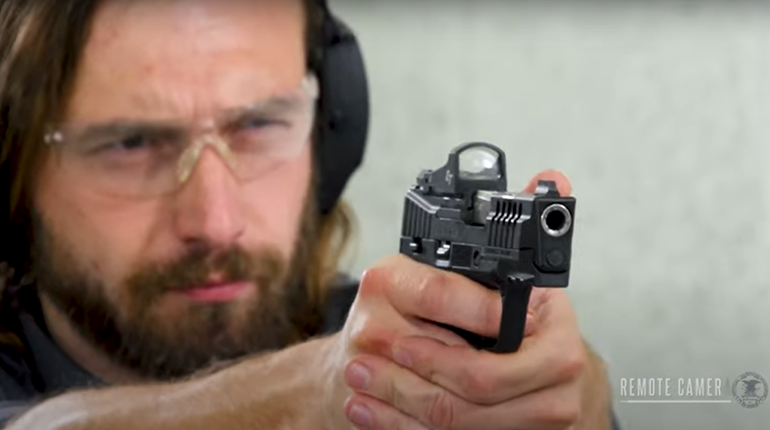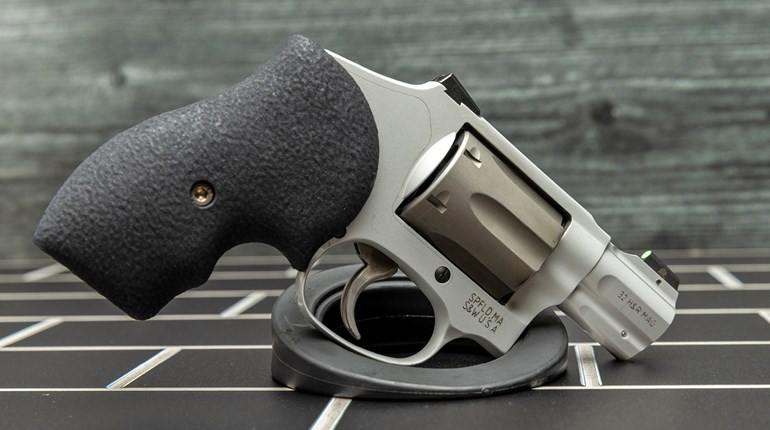
The Springfield Armory Range Officer Elite Compact 1911, shown above, launched in late 2017 as a new batch of 1911 pistols inspired by the success of Springfield's Range Officer 1911 lineup.
There’s an old joke about the appellation “Yankee.” To a citizen of the world, a “Yankee” is an American; to your average American, a “Yankee” is someone who lives north of the Mason-Dixon line. To someone above the Mason-Dixon line, a “Yankee” is someone who lives in New England. And to someone who lives in New England, a “Yankee” is someone who still uses an outhouse. It’s very much like that with 1911s. To purists, a true 1911 should be Government-Model length (5-inch barrel) and chambered in .45 ACP (possibly, albeit begrudgingly, .38 Super).
Springfield Armory’s Range Officer series, introduced in 2010, is available in a dizzying array of configurations. The Range Officer itself combines upgraded features borne of the competitive-shooting world, while the Elite line brings fighting touches to the Range Officer family. The Range Office Elite Compact, new this year, goes a step farther and blends competition and combat touches in a package well-suited for concealed carry. Ambidextrous controls, purchase-enhancing stocks and instinctive sights make for a fighting pistol that is easy to control and conceal.
The Springfield Armory Range Officer Elite Compact features a design that combines a shortened grip with a mid-length slide (it’s a 4-inch barrel, placing it between the Commander and Officer’s Model sizes). As the part most-difficult to conceal, the shorter grip means less printing, while still offering a full, three-finger grip—similar to a Glock G19 for size. Your pinkie isn’t going to hang out in space under the grip, nor is it scrambling for the edge of the magazine, which comes in handy under less-than-ideal shooting conditions. The 4-inch barrel and commensurate longer slide translate into greater sight radius, while the red fiber-optic front sight is easy to acquire quickly.
While the 9 mm model might be an affront to the purists, it’s more controllable and offers greater capacity than the .45 ACP model. It’s also worth noting, as our resident 1911 guru reminded me, that the original Commander was launched in the 1950s in 9 mm as a possible candidate for U.S. military use. Don’t worry, though—if you’re a true 1911 purist, there’s also a Range Officer Elite Compact model chambered in .45 ACP.

One of the first things I noticed when I picked up the Springfield Range Officer Elite Compact was how natural it felt in my hand. That’s always been a huge selling point of the 1911: you pick it up, and as almost of its own volition the pistol is pointing right where you want it. The G10 scales on the Elite ensure it stays firmly in hand, even under rapid-fire situations. I did have to re-acquaint myself with the thumb safety; certainly no fault of the Elite of course, but something to be cognizant of should you pick one up after an extended absence from shooting 1911-style pistols.
I found that the shorter grip and grip safety required a precise grasp of the pistol—always a good thing, of course—to activate the safety mechanisms. When you’re used to a pistol with no external safeties, having two mechanical variants in play means you need even more attention than usual. It’s also a great reason to, as Sheriff Jim Wilson recommends, stick with one operating system for your defensive handgun needs. An imprecise grip that doesn’t engage the grip safety is annoying on the range; used in a defensive situation it could be a costly mistake, indeed. Again, this is by no means whatsoever a knock on the Elite Compact, just a reminder to practice diligently, especially when working with a less-familiar system.

Once adjusted to the operating system, though, there was little to report in the way of problems. The Springfield Armory Range Officer Elite Compact digested 115-grain FMJ, 124-grain defensive ammo and 147-grain subsonic 9 mm with equal aplomb. The only problem noted in all testing was a failure to lock back on an empty magazine a handful of times—the Elite Compact fed, fired and ejected everything tested. Accuracy was exceptional, as noted in the results, when controlled-fire testing was conducted, and the red fiber-optic front sight provided an immediate sight picture excellent for rapid-fire testing.

I’ve always been a big fan of the 1911, but have crossed over to the dark side (polymer, striker-fired guns) for my daily carry. With its light weight, excellent ergonomics and proven reliability, the Springfield Armory Range Officer Elite Compact is the kind of 1911-style pistol that could bring me back into the fold. For fans of the 1911, certainly, this is one solid option for a daily concealed-carry pistol.






































